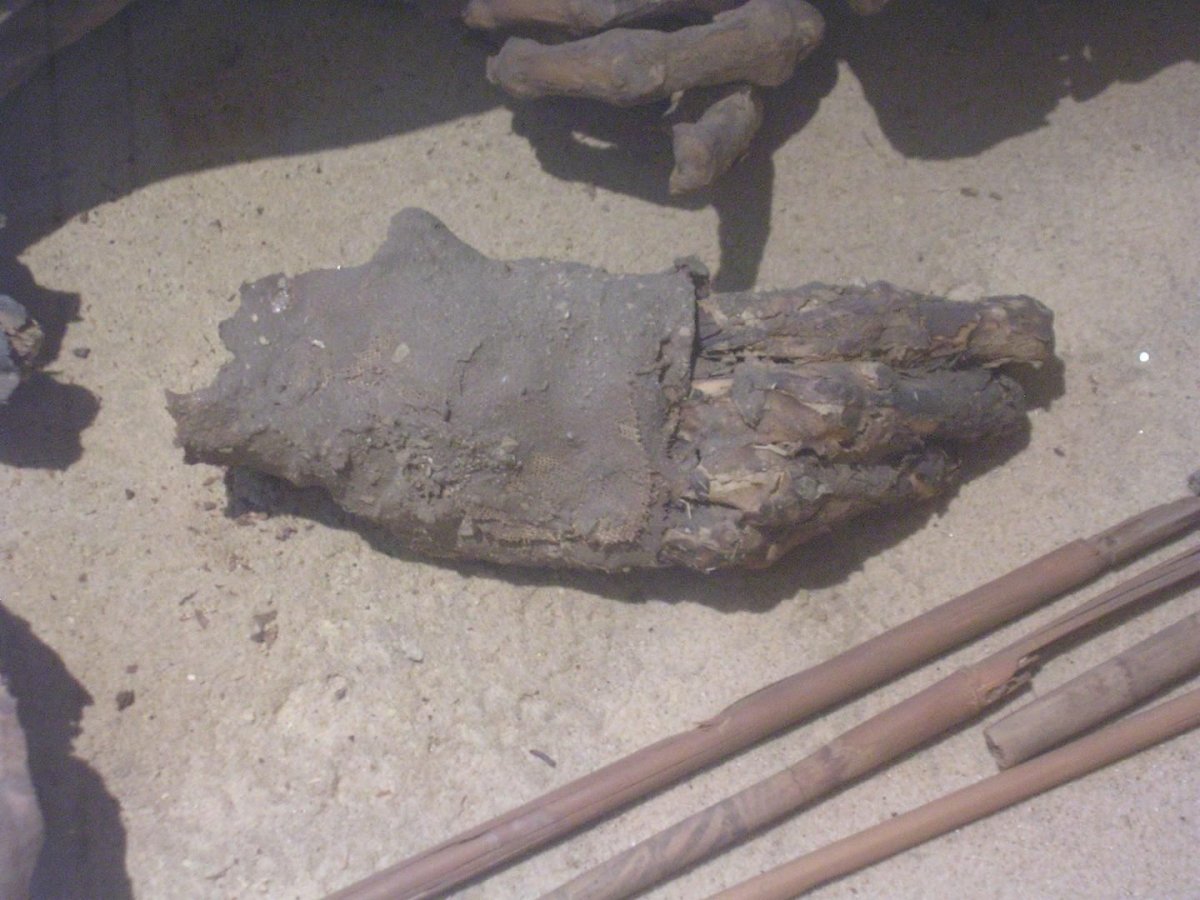
Beyond the pyramids and sphinxes, ancient Egypt is perhaps best known for its mummies. Schoolchildren around the world learn the story of ancient pharaohs—their organs scooped out and their bodies bound in linen—entombed for thousands of years inside great stone pyramids or interred deep underground in the Valley of the Kings.
By revealing the recipe for an ancient embalming salve, archaeologists have traced the roots of these macabre practices back some 2,500 years before mummification reached its peak. People were making mummies far earlier and across a far wider region than previously thought, researchers reported in the Journal of Archaeological Science.
About 5,600 years ago, a body that would come to be known as "Fred" came to rest in the hot sand near Egypt's iconic River Nile. Archaeologists used to think Fred was preserved in the scorching desert for so many years by chance. But analysis of the fabric wrapped around his body revealed the same kind of embalming ingredients found on the mummified remains of Egypt's ancient kings and queens.
Researchers used sophisticated chemical analysis to unlock the secrets of the concoction. Ancient embalmers mixed plant oil, heated resin from conifers, a plant gum or sugar and an aromatic plant extract into a sticky paste that was spread on the fabric wrappings. Its antibacterial properties seeped through the textiles and helped prevent decay.
"Until now," study author and University of York archaeologist Stephen Buckley said to the BBC, "we've not had a prehistoric mummy that has actually demonstrated—so perfectly through the chemistry—the origins of what would become the iconic mummification that we know all about."
The archaeologists previously discovered similar embalming paste in even older fabric found in other Egyptian tombs. But with only linen fragments long since removed from their owners, some researchers were skeptical. It wasn't enough to convince everyone that people were embalming bodies in the region so long ago, study author Jana Jones told National Geographic.

The new evidence from Fred—who has laid essentially undisturbed at the Egyptian Museum in Turin, Italy—"undoubtedly" confirms this 2014 research, Jones said. Originally uncovered hundreds of miles away from the fabric analyzed in the earlier study, the latest research also shows this embalming practice was taking place across a much wider region than once believed, National Geographic reported.
"Our findings represent the literal embodiment of the forerunners of classic mummification, which would become one of the central and iconic pillars of ancient Egyptian culture," Buckley said in a statement.
Uncommon Knowledge
Newsweek is committed to challenging conventional wisdom and finding connections in the search for common ground.
Newsweek is committed to challenging conventional wisdom and finding connections in the search for common ground.
About the writer
Katherine Hignett is a reporter based in London. She currently covers current affairs, health and science. Prior to joining Newsweek ... Read more
To read how Newsweek uses AI as a newsroom tool, Click here.








